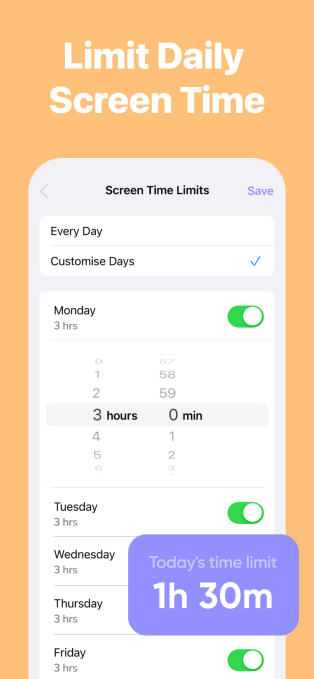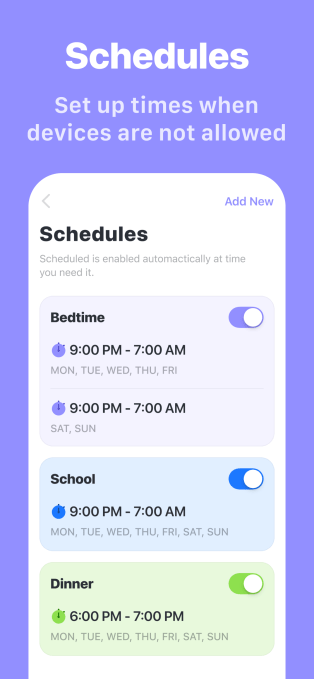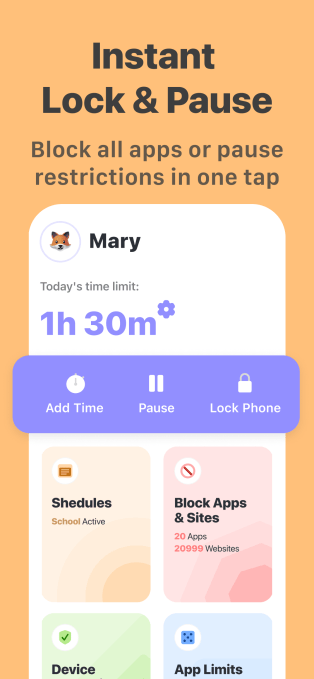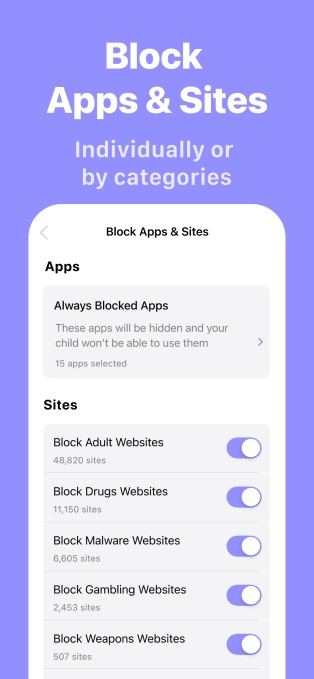Grace debuts privacy-focused parental controls for iOS devices built with Apple’s Screen Time API – TechCrunch
A new startup called Grace is launching to make it easier for parents to monitor and manage their kids’ screen time and app usage on iOS devices. Although Apple offers built-in parental controls, many parents would prefer an app-based solution as opposed to having to dig around in the settings for Apple’s tools. In addition, Grace offers more customization over kids’ screen time schedules. With Apple’s controls, parents can only configure start and stop times for “Downtime,” for instance, as opposed to being able to set other times when app usage should be limited, like school hours, family dinner time, homework time and more.
Grace is also notable for being one of the first to arrive that’s built with Apple’s Screen Time API, introduced at Apple’s Worldwide Developer Conference last year. The new API allows developers to create an interface that works with Apple’s built-in tools in order to expand their functionality.
To use Grace, parents install the app on both their own devices and their kids’ iPhones or iPads. They can then configure a variety of screen time controls remotely in an intuitive interface, including things like daily screen time limits, app time limits, limits on in-app purchases and can block time-wasting apps, among other things. Helpfully, they can also create screen time schedules that better reflect a family’s own rules about how and when kids should be using their devices.

Image Credits: Grace
For example, if you want to block TikTok and Snapchat at bedtime as well as during school hours, there’s no way to do this today using only Apple’s own tools. Instead, Apple’s Screen Time controls let parents set time-based app limits, or “Downtime” — a time when kids can only use parent-approved apps and communicate with those you’ve permitted, like mom or dad, via phone calls and texts. In practice, this translates to parents configuring Downtime to begin at bedtime and extend through the night to limit kids from staying up late on their devices, or they may choose to enable it only during the school day. Either way, this solution is not fully meeting the family’s needs.
Grace, meanwhile, lets parents create all different types of schedules for their children, not just one Downtime schedule. That means parents can limit screen time for different types of apps at various times. At school, kids could be allowed to access educational apps and the web browser but not entertainment apps, social media or games, perhaps. During family dinner, all distractions could be set to off. Parents may also want to configure other screen time schedules related to their own family rules, like bedtime routines, screen-free weekends, vacations or anything else they choose.

Image Credits: Grace
Another benefit to Grace is that it offers enhanced website blocking with built-in filters than automatically block over 50,000 adult, gambling, weapon, alcohol and drug-related websites, and this list is updated regularly. Apple’s own Screen Time tools only focus on blocking adult sites.
Grace also adds quick action buttons that let parents pause restrictions (“Pause”) or block all apps (“Lock phone”), without having to disable the Screen Time settings entirely. Any parent who uses Apple’s Screen Time will understand the benefit here. Often, families are in a position where the usual rules are paused — like when the child is staying up late at a sleepover party, when it’s a school holiday, when they’re home sick or when they’ve earned extra screen time through some sort of allowance system, among other things. But at other times, parents may want to ground a child by limiting access to their device — but don’t actually want to have to take the phone away, since it’s also a way for them to communicate in the event of an emergency. Locking them out of all apps, however, would work to serve as the punishment.

Image Credits: Grace
Grace’s app was created by co-founders, Liana Khanova (Product and Design) and Salavat Khanov (Software Development), who both bring relevant experience to their new project. Khanova previously worked on her startup focused on reducing children’s phone addiction by having them engage with interactive kids’ books that used AR. Khanov had worked on ad blocker and privacy tool 1Blocker. They note that their new app is bootstrapped and fully independent.
The team hopes that Apple will update the API to allow them to be even more competitive with the built-in screen time tools. They said the API today lacks the ability to show users how much time they have left and how much time they’ve used. They’d also love to see an improved app picker available — like the one Apple offers that has a search field. And they would like the API to include the ability to set communication limits, as well, as Apple’s own tools can.
“Despite all of these limitations, I still think this solution is better for parental controls compared to MDM-based apps,” said Khanova as to why Grace is a better option over existing apps that used MDM solutions, an early workaround for lack of API access used by third-party screen time tools. “[MDM apps’] servers might get hacked and sensitive data leaked — like your child’s phone number, visited sites, search requests, installed apps, etc. The attacker could also remotely erase the device,” she said. Plus, “these companies may collect a ton of data and sell it to advertisers,” Khanova warned.

Image Credits: Grace
Screen time management tools for iOS have had a complicated history.
Shortly after the release of iOS 12 in 2018, Apple rolled out its own built-in screen time tracking tools and controls. But the tech giant then began a widespread crackdown on third-party apps that had implemented their own screen time systems, saying these apps had done so in a way that risked user privacy. The earlier apps had come up with creative solutions to solve users’ needs for parental controls — like using VPNs or mobile device management (MDM) technologies — the latter of which had been designed for enterprise use, not consumer-facing apps. MDM-based tools could access a device’s location, control app usage and set various permissions — all of which make sense in terms of locking down employee devices. But Apple argued the same tools were a risk to children’s privacy. While it was correct, it also acted unfairly to immediately block these businesses from continuing to operate the moment it had its own first-party solution available, instead of allowing them to transition to a safer solution, like an API.
Not to mention, Apple had greenlit those same screen time apps and their subsequent updates for years, allowing developers to build businesses that were then destroyed by Apple’s policy changes. Apple CEO Tim Cook was even questioned about this decision during an antitrust Congressional hearing held in July 2020, where the exec again defended the decision as related to consumer privacy.
Apple’s solution was the eventual release of a Screen Time API in 2021 that would allow developers to build on top of Apple’s existing features in a safe, MDM-free way. Arguably, it was the sort of technology that should have been introduced alongside the policy enforcement, instead of years later.
Now that it’s available, however, apps like Grace can come into existence without as much threat of removal.
In addition, at the recent Apple Worldwide Developer Conference, the company introduced a few new Screen Time API features, including the ability to display app and device usage data in a more privacy-preserving way, which Grace says it will use to draw charts and show activity similar to Apple’s own Screen Time system. It’s also now possible to manage screen time and restrictions not only within a parent-child relationship but for yourself — another feature Grace aims to adopt later this fall.
Grace will also later rollout Lock Screen widgets to see how much screen time kids have used, new app shortcuts for quick actions and support for the Mac.
Grace is currently a free download, with advanced features available through a $19.99/year subscription.



